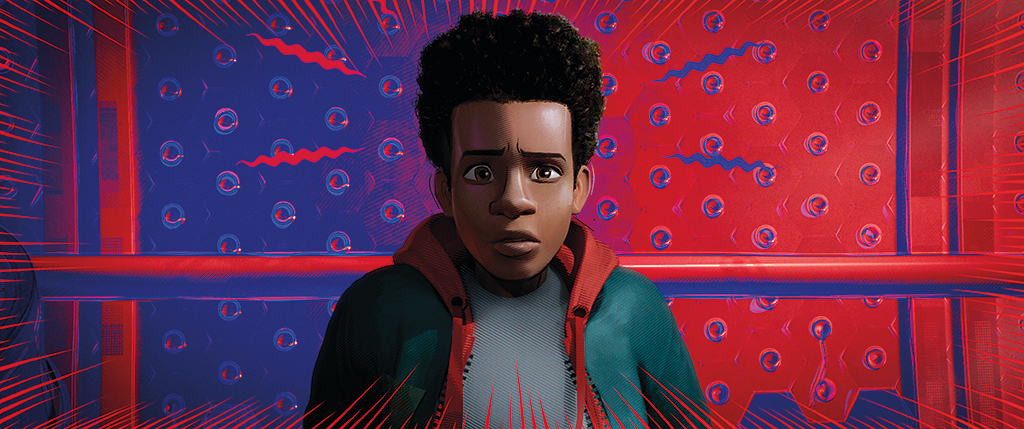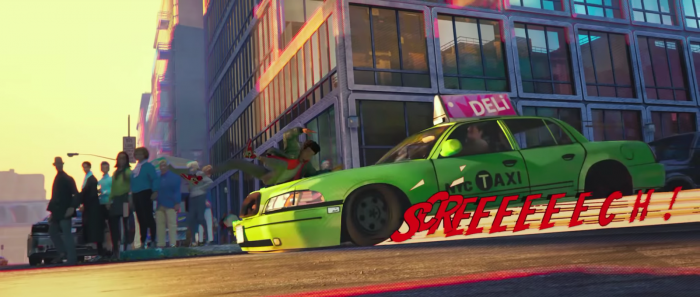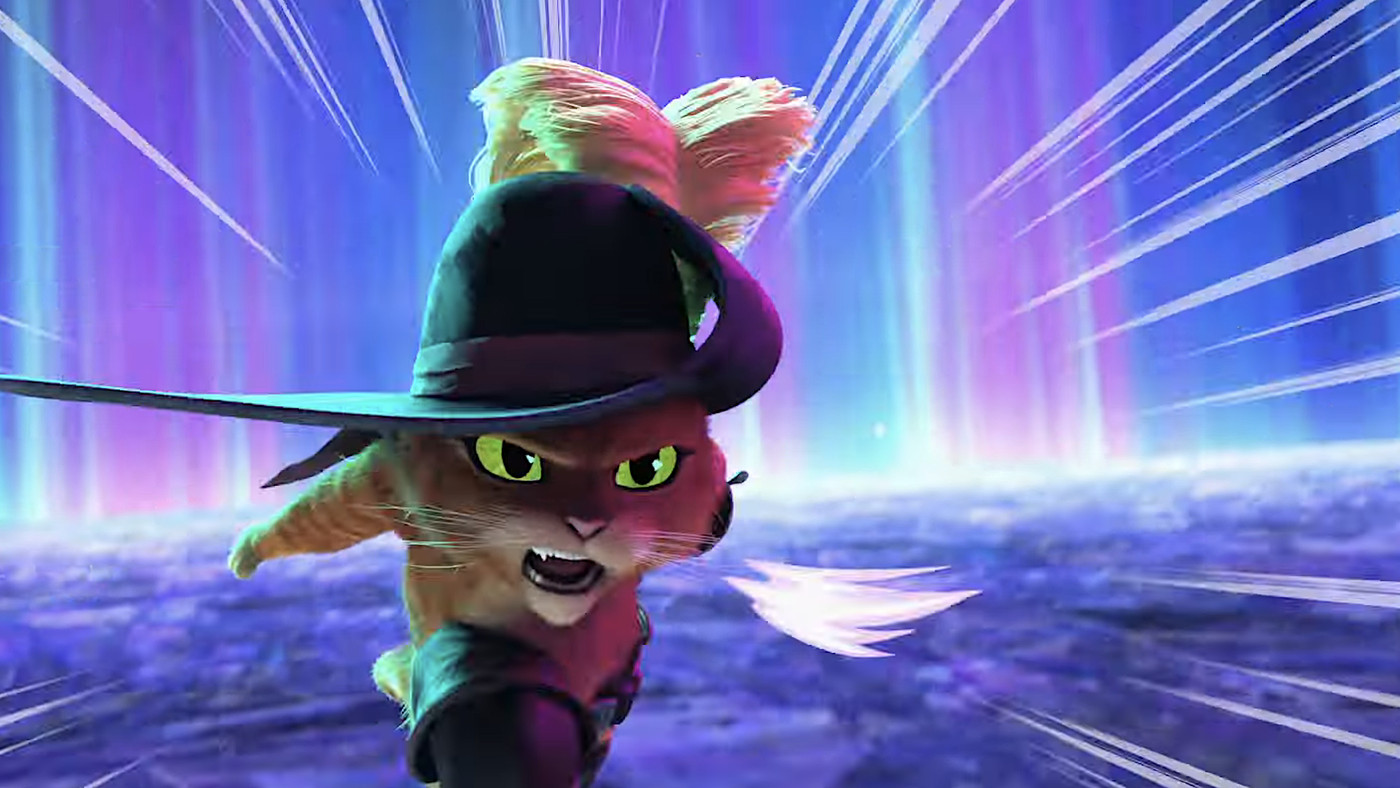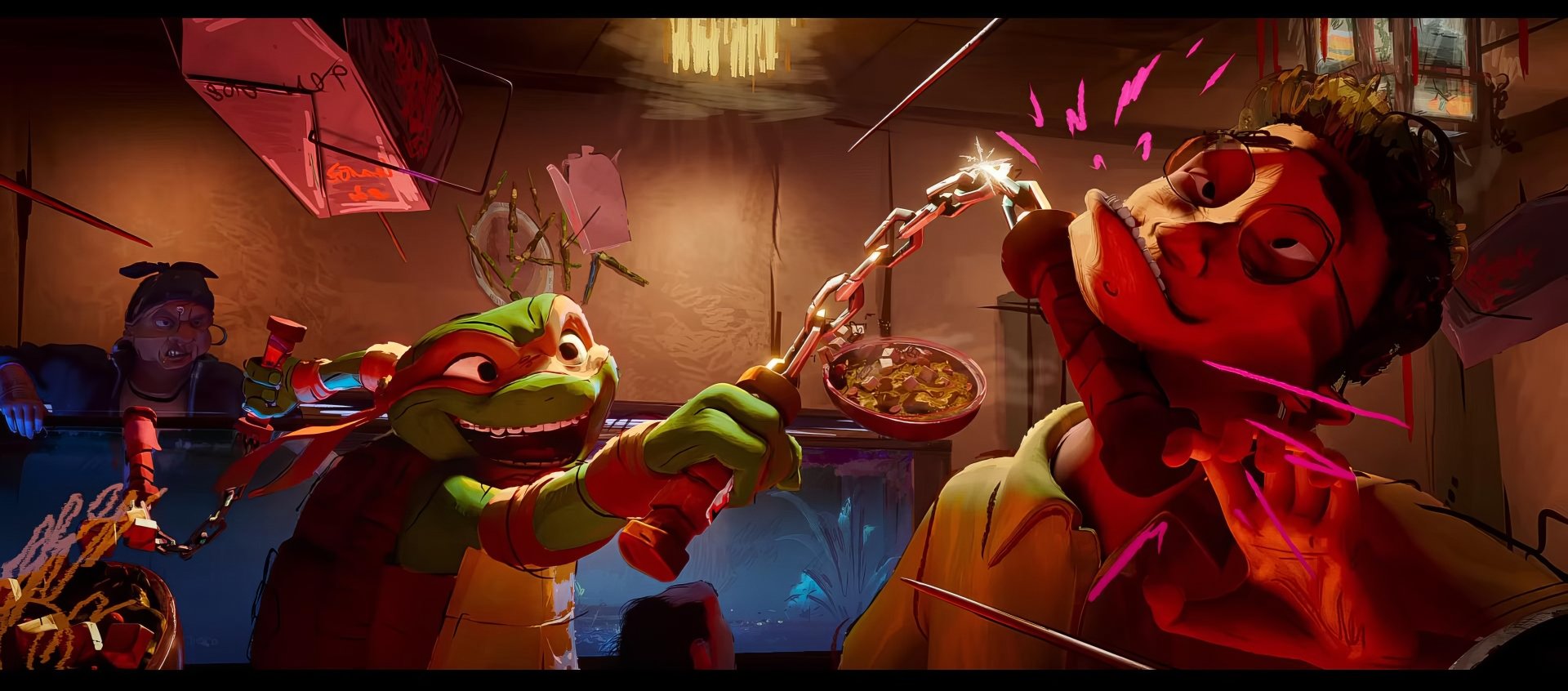
Spider-Man: Into the Spider-Verse is an animated film produced by Sony Pictures and directed by three directors; Bob Persichetti, Peter Ramsey, and Rodney Rothman, based on the characters created by Marvel Comics. The film itself was released in 2018 with the budget of $90 million and grossed a total of $375.5 million at the worldwide box office*.
Based on the box office revenue alone, it could be said that this film was a hit. But what made it stand out? Compared to the animated movies released around that time, or even before, it stands apart with its distinct (or dare I say, iconic) stylistic choices. The movie offers a unique visual style by blending comic elements, which are typically easier to translate into two-dimensional animation, into three-dimensional animation in a way that, as far as anyone knows, had never been done before.
In this film, Sony Pictures successfully blends two-dimensional elements like action lines, speech bubbles, halftone patterns, and various other iconic comic features into three-dimensional animation. Even the characters’ movements feel snappy and jerky, as if you’re watching a character move from panel to panel within a comic book. This creates a truly unique viewing experience, where each frame feels like a comic page brought to life.

Beyond the animation itself, the visuals of the film are simply stunning. The vibrant colors, the chromatic aberration adding to the comic vibe, and the choice to keep some background and foreground details intentionally blurry so the characters remain the focus all contribute to its uniqueness. It’s safe to say that every frame in this movie could pass as a comic panel, creating a truly fresh visual experience.

This style has set a new standard in animation, grabbing attention not only from comic fans but also from critics and filmmakers, making it incredibly influential. This unique visual style didn’t just grab attention; it also established a new benchmark for the industry going forward. The question is, how did Into the Spider-Verse create this trend, and what impact has it had on the world of animation as a whole? Let’s dive into that.
*Based on https://www.boxofficemojo.com/releasegroup/gr4195373573/
The Revolutionary Style of Into the Spider-Verse
Spider-Man: Into the Spider-Verse redefined animation, not just in terms of technique, but in how it embraced and incorporated the aesthetics of a comic book. Compared to most 3D animated films at the time, which relied on hyper-realistic CGI, Into the Spider-Verse set itself apart by being imperfectly perfect; something that looked organic rather than fully computer-generated. The experience the film provides feels innovative, yet familiar at the same time.


The key element of the movie’s visual style here is the comic book aesthetics. Throughout the film, viewers are visually treated to halftone patterns, bold linework, and exaggerated action lines (elements commonly used in printed comics) that are seamlessly transferred into the 3D animation medium. On top of that, onomatopoeic sound effects like “THWIP!” during the web-slinging or “SCREECH!” when a car brakes are integrated in a way that echoes the essence of a comic panel. The filmmakers even turn some shots into something resembling a comic panel, dividing the frames into sections like the layout of a comic book page. This visual approach is a love letter to Spider-Man’s comic roots, presented in a refreshing and dynamic way.



Another standout aspect of the film’s visuals is its technique. The reduced frame rates give the animation a choppy, almost stop-motion feel, enhancing the comic-inspired motion while promoting exaggerated action. Some shots even feature hand-drawn, classic comic-style frames incorporated in between.
The Impact of Into the Spider-Verse
The revolutionary visual style of Spider-Man: Into the Spider-Verse did more than just hook audiences, it also reshaped expectations for the animation industry. The film’s bold and experimental approach to animation stood out in the hyper-realistic CGI-dominated genre and demonstrated that there is still room for innovation. Its success at the box office proved that audiences yearned for something fresh and unique.
By blending 3D animation with comic book-inspired elements (not to mention the movie also incorporated different animation styles like anime and classic Looney Tunes-like aesthetic), Spider-Verse introduced a visual language that had never been seen in the mainstream. It pushed boundaries, showing that stylized, artistic, and expressive non-traditional approaches could still resonate with audiences and, ultimately, do well in the market.
Following Spider-Verse, a wave of trends began to sweep through the industry, where studios started to adopt similar visual techniques and embrace more stylized approaches rather than aiming for photo-realism. One film that seemed to take a page straight from Spider-Verse was The Mitchells vs. The Machines (2021), though it was made by the same team responsible for Spider-Verse. There’s also Puss in Boots: The Last Wish (2022) by DreamWorks Animation, which features a stylized aesthetic that mimics 2D animation, and Teenage Mutant Ninja Turtles: Mutant Mayhem (2023) by Nickelodeon Studios and Point Grey Pictures which was meant to look like the scribbling of a teenager*, further pushing the idea that 3D animation doesn’t have to follow the path of realism.
*Source https://variety.com/2023/film/focus/teenage-mutant-ninja-turtles-mutant-mayhem-animation-1235666541/



Why Into the Spider-Verse Resonated with Audience
Spider-Man: Into the Spider-Verse resonated with audiences for many reasons, but its cultural relevance and emotional depth play a crucial role in its lasting impact. One of the most significant elements of the film is its representation. While Spider-Man is traditionally known as Peter Parker, Into the Spider-Verse introduced audiences to Miles Morales, a character who brought a fresh perspective to the Spider-Man story. Miles, a young hero trying to figure out who he is while carrying the weight of a mantle far bigger than himself, immediately connected with viewers. His story of self-discovery, overcoming doubts, and learning to embrace both his heritage and the power within him was not only groundbreaking but also incredibly relatable. This shift in perspective expanded the character’s legacy and made the film feel relevant to a broader, more diverse audience, who could now see themselves reflected in the world of Spider-Man. This effect could even be seen in the art community back when the movie first released, with many creating their own “spidersonas”, personal representations of themselves if they imagined existing in the Spider-Verse world.
The visuals of Spider-Verse weren’t just eye candy; they were integral to the storytelling. The unique visual style of the film helped convey its narrative in ways that traditional animation techniques could not. Characters from different eras of the Spider-Man franchise were depicted in distinct animation styles that reflected those periods, as were characters from various genres (such as anime, noir, and Looney Tunes-inspired animation). The action sequences were dynamic and intense, with exaggerated motion and comic-inspired effects that heightened the excitement. Even the color palette actively contributed to the storytelling. Some scenes were chaotic and colorful to reflect the adrenaline rush the characters were experiencing, while others were muted and smoother to highlight more grounded, emotional moments.
Additionally, what made Spider-Verse truly appealing, and probably still does, is its accessibility. The film’s deep connection to comic book culture was another driving force behind its popularity. The seamless incorporation of comic book visual elements, like halftone patterns, speech bubbles, action lines, and bold linework, made it feel like a love letter not only to Spider-Man’s comic roots but also to the fans who grew up reading Spider-Man comics. This embrace of comic book aesthetics helped bridge the gap between film/animation and comics, attracting not just Spider-Man fans, but a wide audience, as it was simply an entertaining experience for everyone.
Future of Animation
The groundbreaking success of Spider-Man: Into the Spider-Verse has inspired a wave of artistic innovation, proving that perhaps audiences crave unconventional visual storytelling. Studios are increasingly stepping away from the hyper-realistic rendering that dominated the 2010s and instead opting for visuals that showcase stylistic liberation for the artists. Works like The Wild Robot (2024), Puss in Boots: The Last Wish (2022), and Teenage Mutant Ninja Turtles: Mutant Mayhem (2023) are excellent examples of this trend, incorporating painterly textures, organic-like character designs and lines, and hybrid techniques to craft unique visual identities.
This shift reflects a willingness to take creative risks, prioritizing artistic liberty and what makes art, art, over safe, marketable designs. The popularity of stylized approaches shows that audiences appreciate animation as an art form, not merely a medium for children’s entertainment. It is an art form that can portray deep emotion and, in some cases, serve as a better medium for storytelling when done with this approach, and when it’s done right.
Conclusion
In conclusion, Spider-Man: Into the Spider-Verse has profoundly impacted the animation industry, redefining how animated films can look, feel, and connect with audiences. The film’s groundbreaking visual style, blending comic book elements with 3D animation, set it apart from other animated movies of its time. By incorporating techniques like halftone patterns, speech bubbles, and exaggerated action lines, the filmmakers created a dynamic, visually stunning experience that felt like a living comic book. This style not only enhanced the narrative but also elevated the overall viewing experience, making each frame a work of art.
The film’s success proved that audiences were ready for something fresh and unique. In a time when many animated films relied heavily on hyper-realistic CGI, Spider-Verse embraced imperfection, delivering a look that felt organic and full of personality. The film’s approach, with its reduced frame rates and choppy motion, gave it an almost stop-motion quality that complemented its comic-inspired aesthetic. This was a bold departure from the norm, showcasing that animation doesn’t have to be bound by realism to be compelling, or even ‘perfect’. The film’s visual techniques set a new standard for what could be achieved in animation, encouraging other studios to experiment with stylized, non-traditional approaches.
Beyond the visual innovation, Spider-Verse also resonated deeply with audiences through its cultural relevance and emotional depth. By introducing Miles Morales as the new Spider-Man, the film brought a fresh, diverse perspective to a beloved character. Miles’ journey of self-discovery and acceptance not only broadened the Spider-Man narrative but also made it more relatable to a wider audience. This shift in perspective expanded the character’s legacy, making the film feel more inclusive and connected to real-world experiences. It’s a testament to how animation can be a powerful vehicle for storytelling that goes beyond entertainment.
The film’s success also sparked a trend in the animation industry, with subsequent films like The Mitchells vs. The Machines and Puss in Boots: The Last Wish adopting similar artistic approaches. This trend reflects a growing embrace of artistic freedom in animation, where studios are willing to take creative risks rather than sticking to safe, marketable designs. As a result, audiences are seeing more visually distinct and emotionally resonant animated films, proving that animation can be both a medium for deep storytelling and an art form in its own right.
Spider-Man: Into the Spider-Verse has undoubtedly reshaped the animation landscape, setting a new standard for artistic expression and storytelling that will inspire future generations of animation filmmakers.